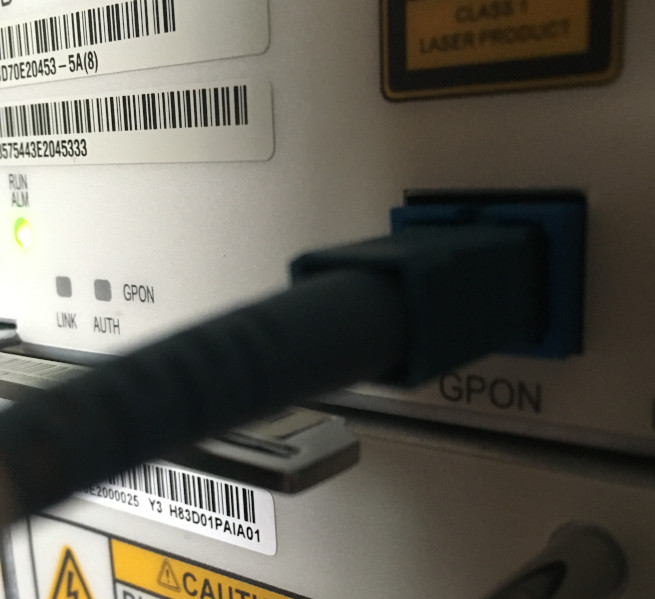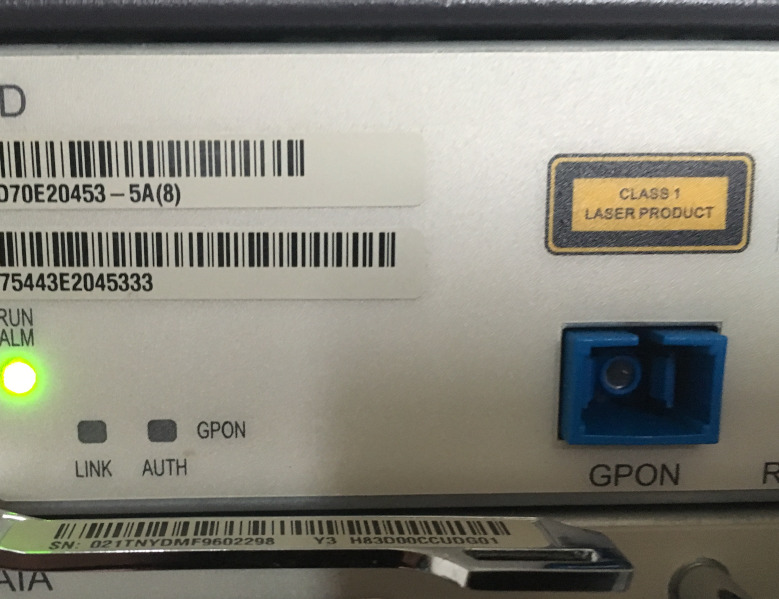|
|
|
|
|
|
Fibre Optic Cable and Connector Types
Connector types
|
|
|
Blue v Green, UPC v APC
Some connectors are green and some are blue. This is to indicate the amount of back reflectance
they cause. When you're sending digital signals down fibre i.e turning the light on and off like morse code
the difference isn't critial as digital signals are less susceptible to the signal degradation.
But some fibre optic systems actually are used to send analogue signals - that is the light doesn't pulse on or off
but is varies continuously as if on a dimmer switch. This is sometimes used to deliver cable TV over fibre.
Traditional cable TV systems send analogue electrical signals over metallic coax cables. Long term obviously the future
is to migrate that to digtlal signals over fibre but some interim systems actually modulate a light wave to represent the
analogue electrical signal as light. If this is being done it is more sensitive to back reflection altering what is received.
Green connectors cause less back reflection and are suitable for both analogue and digital signals.
Blue connectors cause more back reflection and are used for pure digital signals.
As digital signals predeominate, so do blue connectors.
Green ones are called APC connectors which stands for angled physical contact, blue ones are called UPC connectors or ultra physical contact
|
Cables
Cables are classed as single mode or multimode. Single mode has a narrower core which prevents the light spreading out as it travels allowing signals to travel further with less degradation. Cables are referred to by
their core size and cladding size. For example 9/125 indicates 9 micron core with 125 micron cladding.
Single mode cables are typically coloured with a yellow outer jacket. Multimode are typically coloured with an orange outer jacket. Exterior grade cables are typically black but often have a coloured stripe along them to
indicate that it is fibre not copper.
Standard name |
Type |
OM1 |
62.5/125 multimode 850nm wavelength (USA) |
OM2 |
50/125 multimode 850nm wavelength (Rest of world) |
OM3 |
50/125 multimode laser optimised 850nm wavelength (Rest of world) |
OM4 |
50/125 multimode laser optimised 850nm wavelength (Rest of world) |
OS1 |
9/125 singlemode for 1310nm wavelength 1dB/km attenuation (1.6dbB/mile) |
OS2 |
9/125 singlemode for 1550nm wavelength 0.4dB/km attenuation (0.64dB/mile) |
Like copper telecom cables, fibres in a multistanded cable are colour coded for identification. The colour standard scheme adaopted is as follows, however some cables do not follow this pattern. Also it should be noted that patch cables
which contain one or two stands only typically use white and yellow:
Fibre No |
Colour |
1 |
Blue (dark blue) |
2 |
Orange |
3 |
Green |
4 |
Brown |
5 |
Slate (Grey) |
6 |
White |
7 |
Red |
8 |
Black |
9 |
Yellow |
10 |
Rose (Pink) |
11 |
Aqua (Light blue) |
Upto 12 fibres are placed inside one 'loose tube' buffer. Multiple loose tubes can be placed inside the cable. The loose tube buffer contains petroleum jelly to protect the cladding of the fibres inside from getting nicked as they rub against each other or against the tube |
|
|
|
|
|
|
|
|
|


